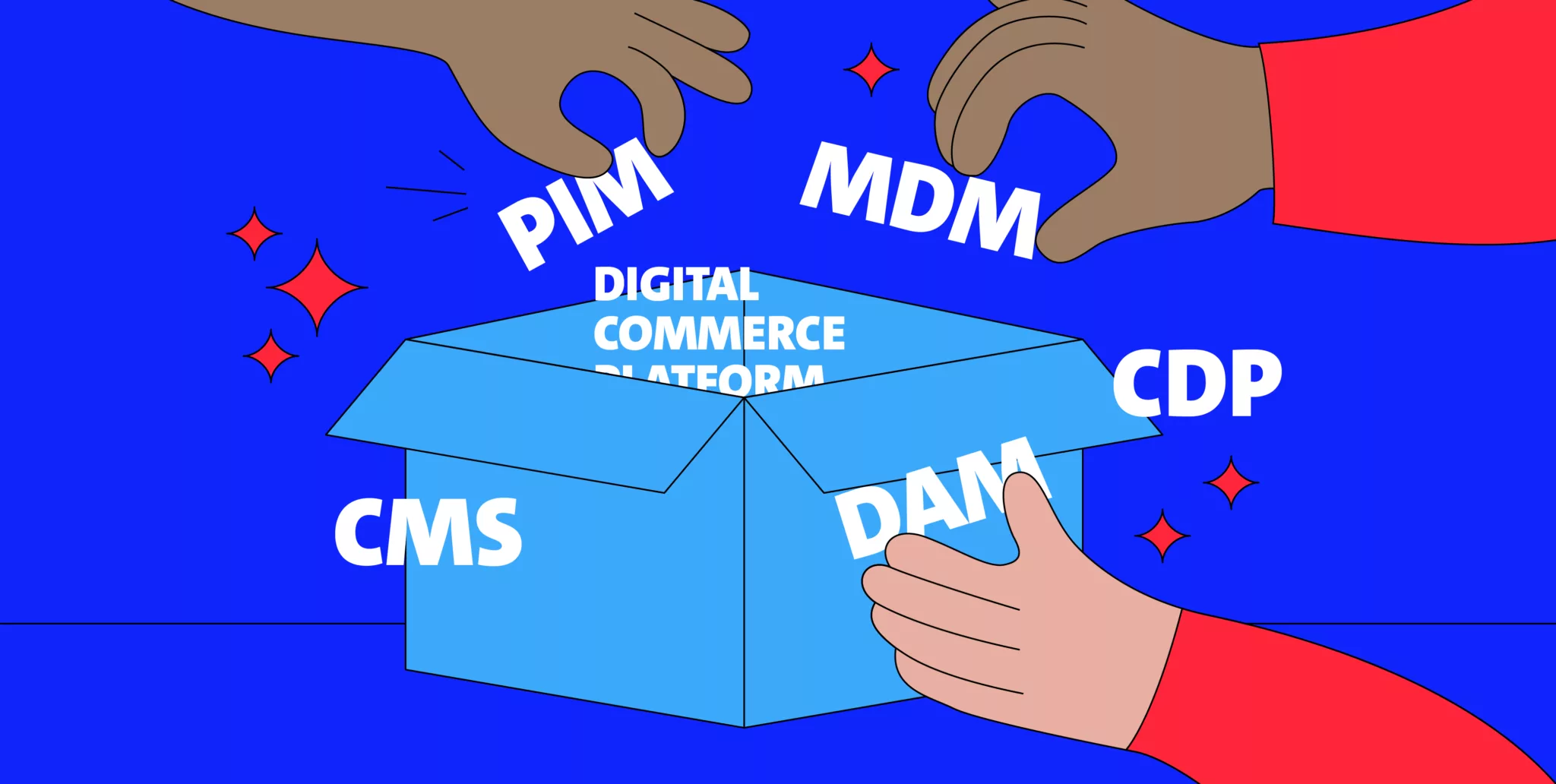When it comes to digital data, Pimcore is the leading open source software (OSS) on the market. Thanks to its high level of functionality, the software is a kind of Swiss army knife: the tool has many useful components, which in turn offer many functions for the user.
On the one hand, this makes it very easy to manage a large amount of data, and on the other hand, you can design your own website as a digital customer experience for users.
In the following article, we explain what exactly Pimcore is, which modules the software has, how you can use it profitably and much more.
01. What is Pimcore?
02. The Pimcore modules at a glance
03. What advantages does the Pimcore software offer?
04. Industries: Where is Pimcore used?
05. Which company data is managed and how?
06. Pimcore vs. special solution?
07. When is Pimcore right for my company?
What is Pimcore?
Even though the software platform is an Austrian product, we prefer to compare Pimcore with a Swiss army knife. Why? Like an army knife, the software is characterised by its multifunctionality. The Pimcore platform combines modules with different functions such as PIM, CMS, DAM, MDM, CDP and e-commerce into a centralised solution.
These can easily be put together according to the needs of a company. The decisive factor is the right interaction between the modules and their functions.
Even if the software is primarily used to manage data correctly, Pimcore can do even more: with the help of the tool, you can not only diligently collect, classify and manage company data, but also strengthen the bond with your users through ideal customer experience management.
Incidentally, Pimcore is an open source software platform. This means that its services are available licence-free and can be used free of charge.
The Pimcore modules at a glance
What can the six Pimcore modules actually be used for? Here is a brief overview of the individual functions of the digitisation helpers:

PIM – The abbreviation stands for Product Information Management and systems in this module help to manage product-relevant data.
MDM – This refers to master data management (or master data management). It serves similar purposes to PIM – but processes not only product data, but all company data.
DAM – With digital asset management, all digital media content (such as graphics, videos, music files and texts) can be stored and managed.
CMS – The Content Management System (also called Web Content Management System) allows the creation, editing, organisation and presentation of content.
CDP – The abbreviation stands for Customer Data Platform and provides a centralised repository for customer data.
Digital Commerce Platform – Pimcore’s e-commerce module is ideal for building customisable online shops thanks to its easy-to-assemble and API-controlled components.
What are the advantages of the Pimcore software?
As a one-system solution, Pimcore offers clear advantages for digital transformation:
All in one:
Thanks to its modular structure, the suite offers six products in one, which also work as individual solutions in their own functionality. As a company, you can initially only use a single module. If further developments in the IT landscape are required due to growth or reorganisation, additional modules can be integrated without any problems. The modules are always compatible with each other.
No connection problems:
With its holistic API approach, the architecture of the OSS is designed to connect everything together. Whether synchronised operation of multiple channels, two-way communication with business enterprise or customer relationship management systems or third-party applications, the data transfer functions smoothly.
Stability even with growth
Pimcore is both horizontally and vertically scalable: even if the number of users increases, the software can continue to be operated without any problems. If the functional requirements increase, the software can also continue to run without any problems. Thanks to the PHP framework Symfony, even this type of high load does not affect the stability of Pimcore.
In addition to these general strengths that Pimcore has as software, there is a decisive advantage for SMEs: the Pimcore Platform offers (medium-sized) companies with a small IT department a great deal of leverage when it comes to setting up internal digital structures.
Industries: Where is Pimcore used?
The Swiss Army Knife for data management is very popular with many companies – from large corporations to SMEs. Pimcore itself speaks of 100,000 companies worldwide that rely on the open source software solution.
The module for e-commerce in particular is very popular in the form of website shops. However, nothing speaks against the use of Pimcore for niche products or services. A specialised solution in the form of master data management or a customer data platform can be too complex to develop and maintain, especially for such companies.
Which company data is managed and how?
Whether product, customer, supplier, multimedia, marketing or sales data – the all-in-one tool can really be used as a central collection point for all company information.
And not only that! Data can be analysed, classified, linked and evaluated in such a way that companies can use it as efficiently as possible – even across departments. So-called data silos are thus broken up and work between different departments is made much easier.

Pimcore vs. special solution?
Pimcore appears to be the ideal software product when it comes to guiding a company’s digital transformation in new directions: Data can be managed centrally with the modules and the “digital experience” for users can be designed to be particularly compelling at the same time.
So why consider another specialised solution? Even though Pimcore offers six products in one as a one-system solution, the software reaches its limits at some point. A specialised solution such as a central master data management system, CMS or CDP is definitely suitable for companies if
- … even greater leverage is needed for digitalisation,
- … an even higher degree of customisation is required for the tools,
- … the company structure is very dynamic and agile and the tools must therefore offer more expansion options.
When is Pimcore right for my company?
There is no general answer as to whether Pimcore is right for a company. Rather, it is a trade-off between the practical all-in-one solution and separate tools.
There is no one-size-fits-all solution that applies to all companies and industries. Progress in digital transformation is also not necessarily a decisive factor in the decision: Pimcore is not only used by digitalisation newbies, but also by players who have long been in the midst of digital transformation.






